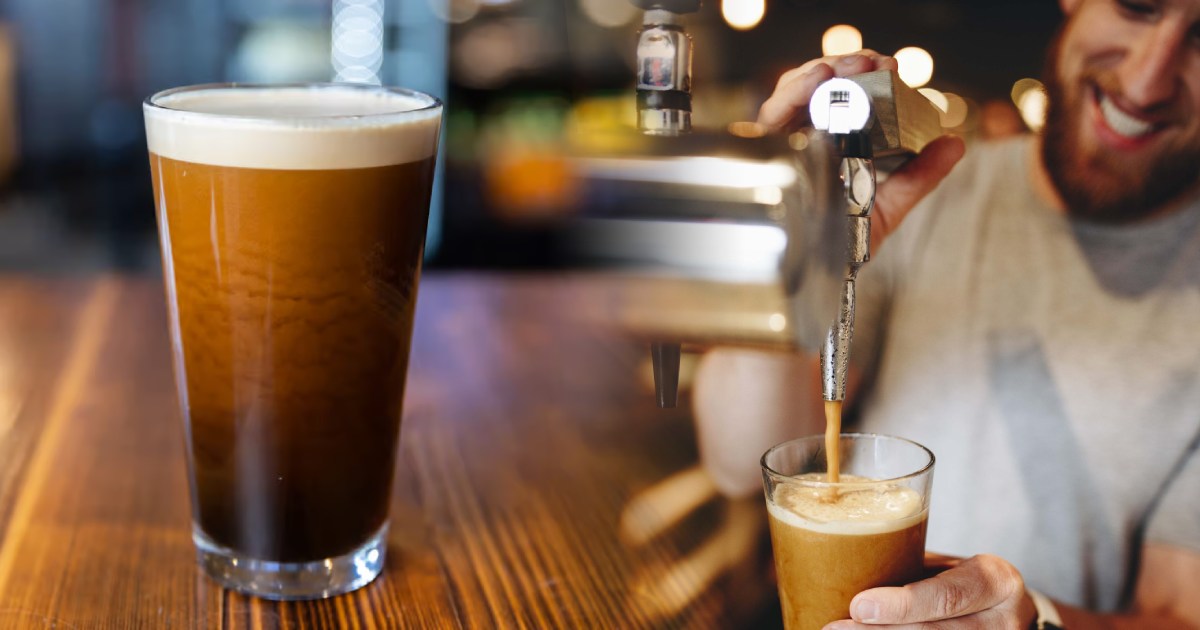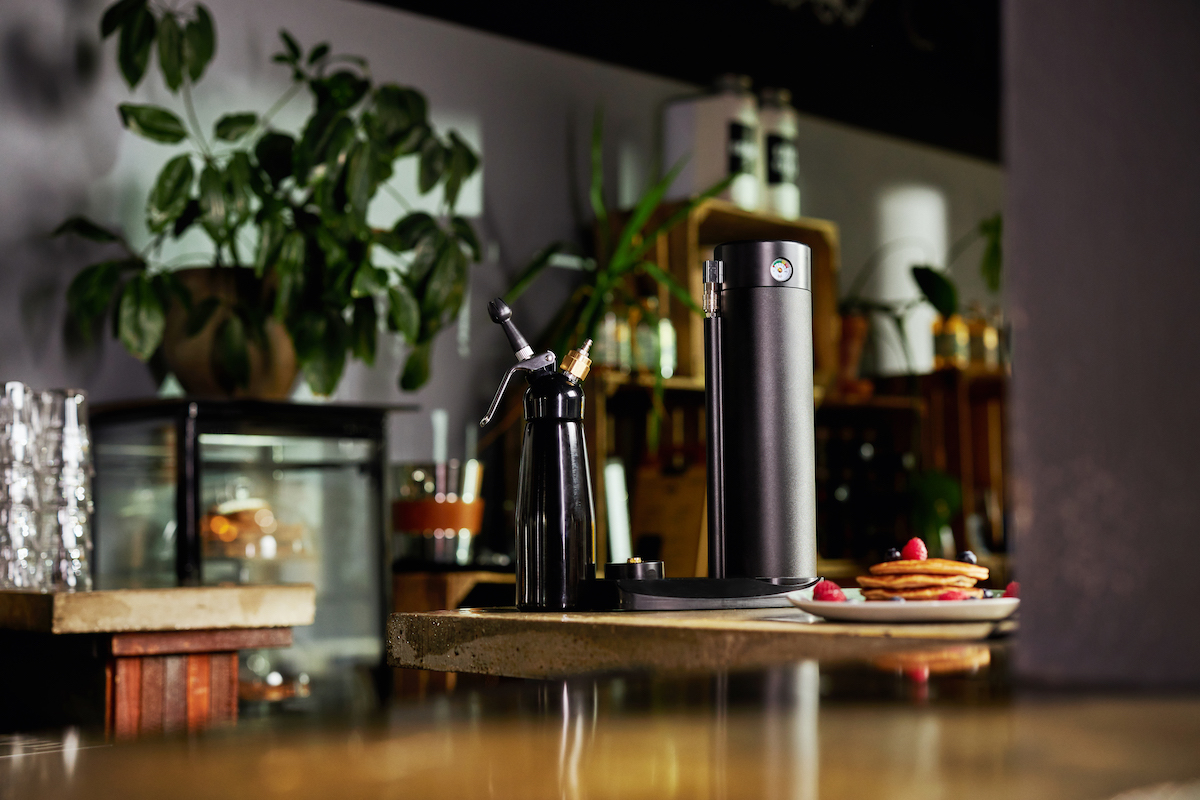Whipped Peanut Sauce Recipe: Ultimate Guide for Creamy Perfection
The Biggest Cream Charger Knowledge Base Online
A perfectly balanced whipped peanut sauce recipe delivers rich, nutty flavors with a light, creamy texture that transforms any dish. By incorporating Exotic Whip, you can elevate this sauce from a simple condiment to a velvety, airy creation that coats ingredients beautifully.
The whipping process with cream chargers infuses air, creating a fluffier, smoother sauce that’s easy to drizzle, spread, or dip—ideal for everything from summer rolls to grilled meats.
Essential Ingredients for Whipped Peanut Sauce
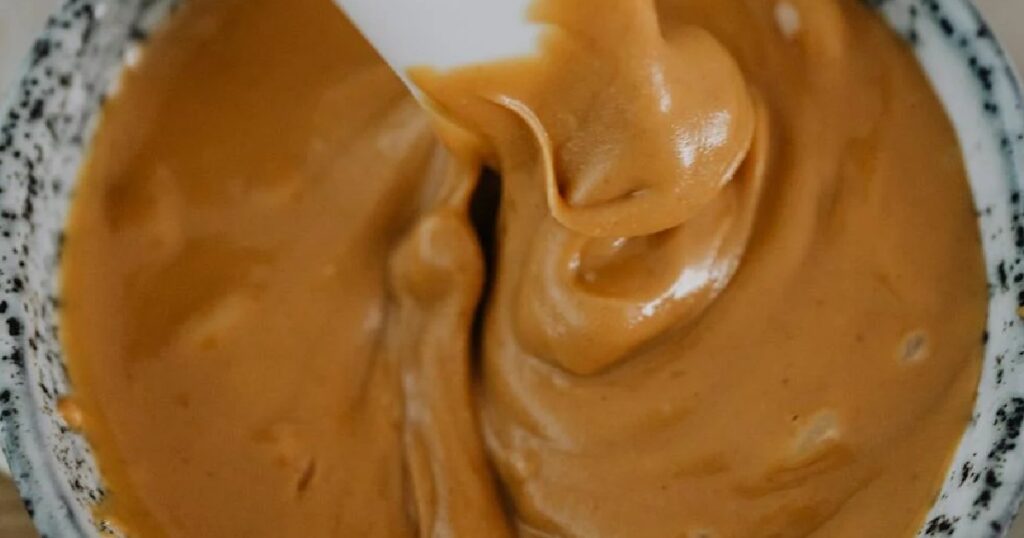
Creating the perfect whipped peanut sauce requires balancing rich nutty bases with the right sweeteners, acids, and aromatics. Each ingredient category plays a specific role in achieving that light, fluffy texture and complex flavor profile.
Peanut Butter Varieties and Alternatives
- Natural peanut butter works best for whipped sauces because it contains no stabilizers that can interfere with texture. You’ll get cleaner flavors and better mixing results.
- Creamy peanut butter creates the smoothest whipped texture. It blends easily with liquids and produces an even consistency throughout your sauce.
- Chunky peanut butter adds texture but requires more effort to achieve a smooth whip. If you prefer some texture, add crushed peanuts to creamy peanut butter instead.
- For nut-free options, almond butter provides similar richness with a slightly sweeter taste. Sunflower seed butter works well too, though it changes the flavor profile significantly.
- Room temperature nut butters whip more easily than cold ones. Let your jar sit out for 30 minutes before making your sauce.
Sweeteners and Flavor Enhancers
- Honey dissolves quickly and adds floral notes that complement peanut flavors perfectly. It also helps create a glossy finish when whipped properly.
- Maple syrup brings deeper, more complex sweetness. Grade A dark robust maple syrup provides the strongest flavor impact for your sauce.
- Brown sugar works but requires extra mixing to dissolve completely. Simple syrup eliminates this problem while adding pure sweetness.
- Soy sauce adds essential umami depth and saltiness. Use low-sodium versions to control salt levels better. This ingredient transforms sweet peanut mixtures into savory sauces.
- Salt enhances all other flavors and balances sweetness. Sea salt or kosher salt work better than table salt for cleaner taste.
Acids and Liquids for Balance
- Lime juice provides bright acidity that cuts through rich peanut flavors. Fresh lime juice works much better than bottled versions for vibrant taste.
- Rice vinegar offers gentler acidity with subtle sweetness. It blends smoothly without creating harsh flavors that can overpower delicate peanut notes.
- Water thins the mixture for proper whipping consistency. Warm water incorporates faster than cold, helping achieve smoother results quickly.
- Coconut milk creates ultra-creamy textures while adding subtle tropical flavors. Full-fat coconut milk works best for richness, while light versions provide less calories.
The liquid-to-peanut butter ratio determines final thickness. Start with small amounts and add gradually while whipping.
Aromatics and Spices
- Garlic adds savory depth that transforms sweet peanut butter into complex sauce. Fresh minced garlic provides the strongest flavor impact.
- Ginger brings warm spice and slight heat. Fresh grated ginger works better than powder for bright, zesty notes that complement peanut flavors.
- Sriracha delivers controlled heat with garlic and vinegar undertones. Its smooth texture blends easily without creating lumps in whipped sauces.
- Sambal oelek provides pure chili heat without added flavors. This gives you more control over spice levels and sauce complexity.
- Toasted sesame oil adds nutty depth and authentic Asian flavors. Use sparingly as its strong taste can overpower other ingredients quickly.
- Regular sesame oil provides milder nutty notes. It blends smoothly and adds richness without competing with peanut flavors.
How to Make Whipped Peanut Sauce
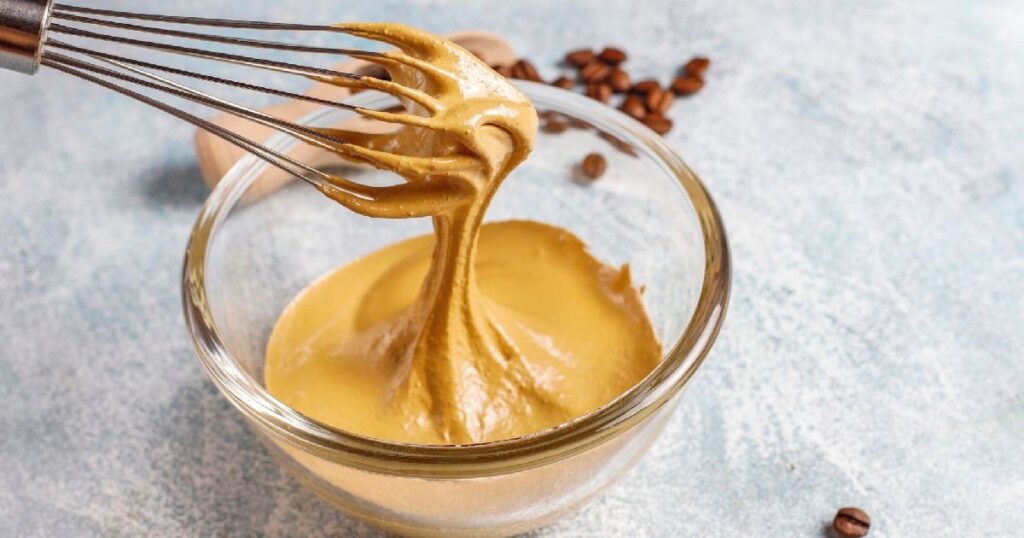
Making whipped peanut sauce requires the right tools and a specific whipping technique to create a light, airy texture. The key steps involve proper preparation, controlled mixing speed, and gradual ingredient addition for smooth, consistent results.
For an even more luxurious, restaurant-quality finish, incorporating Exotic Whip products can elevate your sauce by infusing it with microbubbles of air. This creates a mousse-like texture that feels lighter on the palate while maintaining the rich, nutty flavor of the peanut base.
Preparation Techniques and Equipment
You need a stand mixer or hand mixer with a whisk attachment for best results. A large mixing bowl gives you space to whip without spillage.
Gather your ingredients before starting. Room temperature peanut butter mixes easier than cold. If your peanut butter is thick, microwave it for 20–30 seconds to soften.
Essential equipment:
- Stand mixer or hand mixer
- Large mixing bowl
- Measuring cups and spoons
- Rubber spatula
- For a professional finish, Exotic Whip cream dispenser and charger
Set up your workspace with everything within reach. This homemade peanut sauce recipe works faster when ingredients are ready. Check that your peanut butter has no oil separation. Stir it well first if needed.
Whipping Methods for Creamy Texture
Start mixing on low speed to prevent splattering. Gradually increase to medium-high speed once ingredients combine. Add liquid ingredients slowly while the mixer runs. This prevents the peanut butter sauce from breaking or becoming lumpy.
Speed guidelines:
- Start: Low speed (1–2)
- Middle: Medium speed (4–5)
- Final whip: High speed (7–8)
Whip for 2–3 minutes total. The mixture should look light and fluffy. Stop mixing when peaks form but don’t over-whip. The protein and healthy fats in peanut butter create natural thickness, but incorporating air—and especially using an Exotic Whip charger—makes this sauce even smoother and more aerated than regular versions. This creates a versatile consistency that’s perfect for drizzling, dipping, or tossing with noodles.
Scrape bowl sides twice during mixing. This ensures even texture throughout your simple peanut sauce.
Recipe Steps for Consistent Results
- Base: Add 1/2 cup peanut butter to your mixing bowl. Start on low speed for 30 seconds.
- Liquids: Slowly pour in 2 tablespoons warm water while mixing. This creates the base for your peanut sauce recipe.
- Flavor: Add 1 tablespoon soy sauce, 1 teaspoon honey, and 1/2 teaspoon garlic powder. Mix on medium speed for 1 minute.
- Whip: Increase to high speed. Whip for 2 minutes until light and airy. For a fluffier, café-style texture, transfer the sauce to a cream dispenser, charge with one Exotic Whip cartridge, and shake for 30 seconds.
- Adjust: Taste and adjust. Add more water for thinner consistency or more peanut butter for thickness.
The finished sauce should hold soft peaks and be noticeably lighter in colour than regular peanut sauce. When using Exotic Whip, the result is a silky, aerated sauce that spreads and coats ingredients effortlessly. Store covered in the refrigerator for up to one week.
Customizing Whipped Peanut Sauce
You can easily adjust your whipped peanut sauce texture from thick to pourable and add bold flavors or swap ingredients to match your taste preferences. The key is making small changes and tasting as you go.
Texture Adjustments and Consistency Tips
Start with less liquid when whipping your peanut sauce. You can always add more water or coconut milk later.
For a thicker sauce, use less liquid or add an extra tablespoon of peanut butter. For a thinner consistency, add warm water one tablespoon at a time while whipping.
Chunky peanut butter creates natural texture in your sauce. The small peanut pieces add fiber and create a more rustic feel.
You can also fold in chopped roasted peanuts after whipping for extra crunch. This gives you both smooth and chunky textures in one sauce.
Temperature affects thickness too. Warm sauce flows easily, while cold sauce gets thicker. Let refrigerated sauce come to room temperature before serving, or thin it with a splash of warm water.
Best Ways to Use Whipped Peanut Sauce
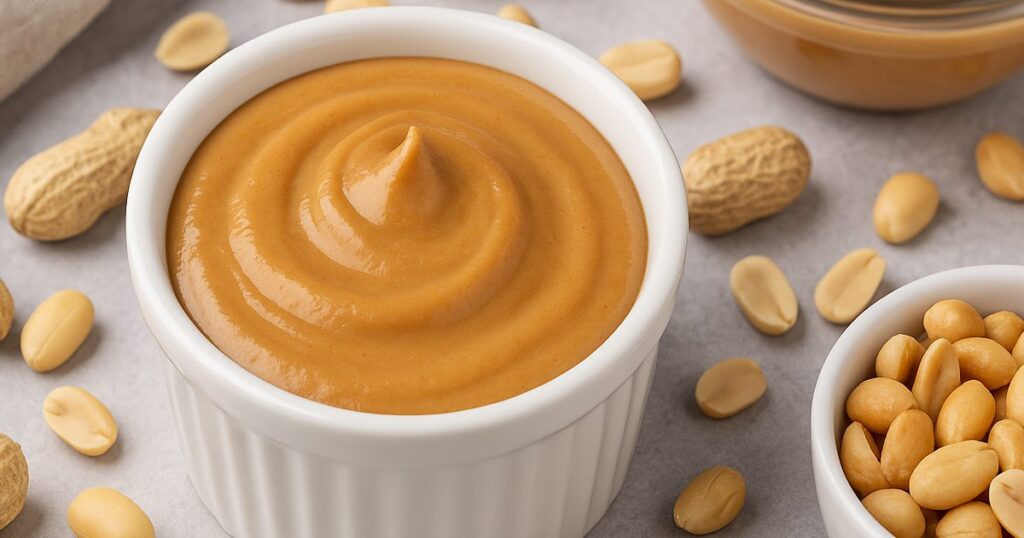
Whipped peanut sauce works perfectly as a dip for fresh rolls and grilled skewers, creates creamy coatings for noodle dishes, transforms salads with its rich flavor, and enhances grilled proteins and vegetables with its smooth texture.
Dipping: Summer Rolls, Chicken Satay, and More
Whipped peanut sauce makes an ideal dipping sauce for summer rolls. The light, airy texture coats each bite without overwhelming the fresh vegetables and herbs inside.
For chicken satay, this fluffy version clings better to the grilled meat than regular peanut sauce. The whipped consistency allows for easier dipping and spreading.
Popular dipping options include:
- Fresh summer rolls with shrimp or tofu
- Grilled chicken or beef satay
- Raw vegetables like carrots, cucumbers, and bell peppers
- Crispy spring rolls
- Steamed dumplings
The sauce works well at room temperature for dipping. You can thin it with warm water if it becomes too thick after refrigeration.
Tossing and Drizzling for Noodle Dishes
The whipped texture makes this sauce perfect for coating noodles evenly. It creates a creamy layer that sticks to rice noodles, wheat noodles, and even pasta.
For hot noodle dishes, toss the cooked noodles with the sauce while they’re still warm. The heat helps the sauce distribute smoothly.
Cold noodle salads benefit from the whipped consistency too. Mix the sauce with cooked and cooled noodles, then add fresh vegetables and herbs.
Best noodle pairings:
- Rice vermicelli with fresh herbs
- Pad thai-style rice noodles
- Cold soba or udon noodles
- Vietnamese bun bowls
Add a splash of lime juice or rice vinegar to brighten the flavor when using with noodles.
As a Salad Dressing and Marinade
Whipped peanut sauce works as a creamy salad dressing that’s lighter than traditional versions. It coats greens well without making them soggy.
For marinades, the fluffy texture helps the sauce penetrate meat and tofu better. Marinate proteins for 30 minutes to 2 hours for best results.
Salad combinations that work well:
- Mixed greens with grilled chicken
- Shredded cabbage and carrot slaw
- Thai-style beef salad with herbs
- Cucumber and bean sprout salad
The sauce keeps marinated tofu moist during cooking. It also works for chicken thighs and pork tenderloin.



